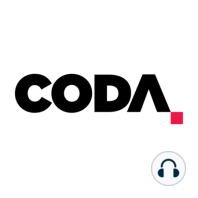22 min listen
The truth about paediatric analgesia
FromCoda Change
ratings:
Length:
24 minutes
Released:
Jan 24, 2020
Format:
Podcast episode
Description
Treating pain is important. Treating pain in a vulnerable population like infants, who cannot speak for themselves, is especially important. Unfortunately, there is a great deal of evidence, from many clinical settings, that suggests that we don't do a great job treating pediatric pain. Recognizing this problem, and based on a large number of randomized controlled trials, many experts recommended the use of sucrose to manage infants' pain. I question this approach and suggest we are safer to assume that sucrose is not a pain medication. Unfortunately, we can't measure pain in infants. The experience is entirely subjective. However, sucrose has been studied in populations who can report their pain (older children and adults) and does not work. Sucrose changes behavioural scores in infants, but those scores do not measure pain. Even if they did, observation is inaccurate for estimating pain in older populations who are able to report pain scores, so we should be skeptical of their accuracy in infants. Furthermore, in brain imaging studies, despite looking calmer, infants‚ brains still react as if they are in pain when sucrose is given. Therefore, I think the safest approach is to assume that sucrose is not a pain medication, and focus on other analgesic options (with proven effect in patient populations that can report their pain). Instead of relying on sucrose, I offer my top five tips for pediatric pain control. 1) Limit painful procedures whenever possible. (Think carefully about whether tests will actually change management. Use oral meds instead of IM or IV. Group painful procedures together.) 2) Think topical. EMLA is a proven option, but amethocaine works faster, and therefore might be a better option. 3) Consider using nerve blocks. 4) Remember the intranasal route. Fentanyl, ketamine, and midazolam are all excellent agents that can be used intranasally to help with pediatric pain and anxiety. 5) Think about distress, not just pain.
Released:
Jan 24, 2020
Format:
Podcast episode
Titles in the series (100)
Scott Weingart: The Essence of Critical Care: Upstairs Care, Anywhere!: Scott Weingart's call to resuscitationists. The first of three Resuscitation plenary talks. Scott's amazing Podcast is found at emcrit.org. by Coda Change
